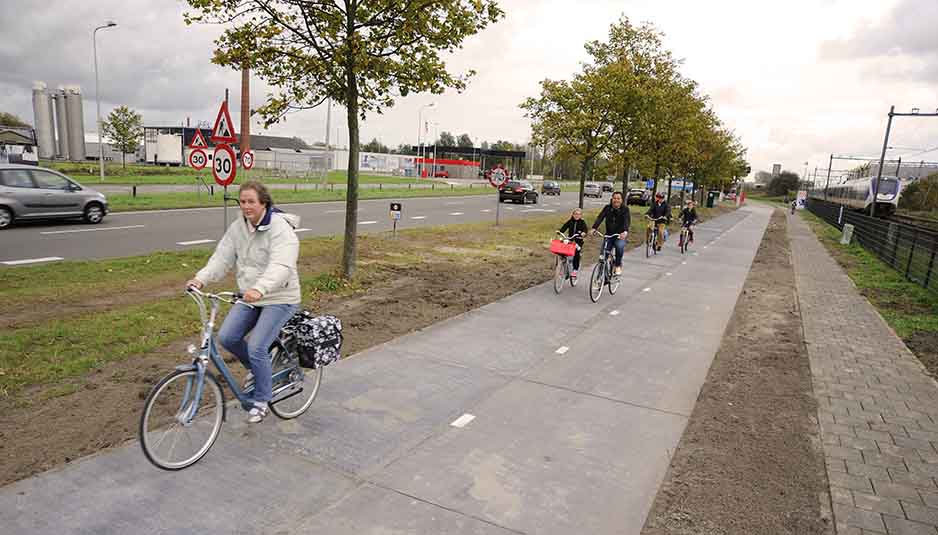What if Roads would Produce Energy? The world’s first example
Did you know that the sunlight falls on 450 square km road surface every single day? What if would be possible use this energy?

Did you know that the sunlight falls on 450 km2 road surface every single day? Did you know that if all the roads in USA were converted to solar roads, the country would cut CO2 by 75% and produce at least two times as much energy as it uses actually? These questions are the pillars of the solar paneling units developed by two US engineers – Julie and Scott Brusaw – since 2006. They built a prototype thanks to a contract with the American’s Federal Highway Administration in 2009, but they raised more than 2 million of euros through a popular viral video and a crowdfunding website last year in order to put the product into production. More about the American example is in Solar Roadways: il futuro delle strade è green.
The focus of this article is, by the way, about solar cycle path. One of the most bicycle friendly country is the Netherlands. Specifically, there is a bike path connecting Krommenie and Wormerveer suburbs of Amsterdam (GPS location: 52.493968, 4.766399) in which almost 2000 people ride every day. Seventy meters of the latter have been converted five months ago into the world’s first public road with embedded solar panels through SolaRoad technology.
This technology has been developed as prefabricated slabs, consisting in modules of 2.5 by 3.5 meters. SolaRoad product is characterized by normal crystalline silicon solar cells with one centimeter of translucent top layer of tempered glass. The main problem has been, as we can imagine, the external surface, which should have been translucent for sunlight, repellent for the dirt and as strong as possible in order to be a safe and resistant road surface. It has cost about three millions euros to the local authorities and now it is working simply well, even if this kind of solar technology produces roughly 30% less energy than those fixed on house’s roofs. Next year the path will already be extended to 100 meters and it will produce energy to power at least three households.
The generated electricity could easily be used for street lighting and traffic systems too, as well as electric vehicles. Netherlands’ TNO Research Institute has studied that up to 20% of the 140000 km of country’s road could potentially be adapted to this technology. Tests have proved that those kind of solar panel units successfully carry the weight of heavy vehicles such as truck and tractors. As a consequence they could be used for normal roads or highways as engineers and technician are already doing in US. One of the engineers who studied SolaRoad in Netherlands has said: “This could be a breakthrough in the field of sustainable energy supply. In particular, if the road concept will develop into a system, with which the generated electricity is transported to the vehicles driving on the road. Try to imagine that power will then be generated at the place where it is needed. Subsequently, a big step towards an energy-neutral mobility system will be possible”.
Header image credits: solaroad.nl
